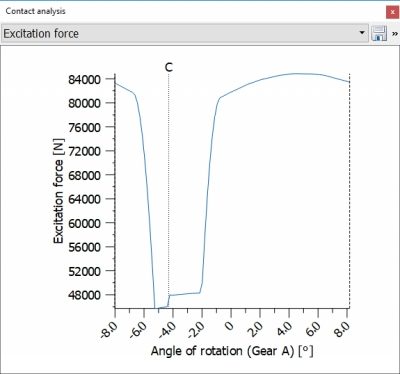www.powertransmission.com/articles/7047

Determining Excitation Force in KISSsoft
April 24, 2019
Since the 03/2018 release, KISSsoft contact analysis also calculates the excitation force according to the FVA Report 487 (module ZA30) in addition to the transmission error. This serves as an alternative for the evaluation of the toothing with regards to vibration and noise excitation.
A modified base model is used to calculate the excitation force: for the transmission error, the calculation is based on the assumption that there is a static situation in which the gears in contact have the possibility to yield to one another. This makes it possible to compensate for deformation in the elastic elements (teeth, shafts, bearings, etc.) and adjust the continuous, externally applied torque.
The idea behind excitation force is that the gears turn as quickly as possible so that, due to the mass moment of inertia, no error is possible. This results in constant gear torsion as a boundary condition – no transmission error, but rather a change in the tooth force because of inconstant tooth rigidity. As a result, the torque changes periodically.
The topic of excitation force is also part of the special training that will be held from November 19-20, 2019: Contact pattern analysis for cylindrical gears, bevel gears and planetary gear units. During this training, contact analysis modules in KISSsoft will be used to teach the theoretical foundations that are required in order to efficiently size and optimize gear units with regard to noise, transmission error, as well as profile and tooth trace modifications. In addition to the training course, an optional one-day workshop will be held on November 21st, 2019 that will give participants the opportunity to individually apply and deepen what they have learned.
